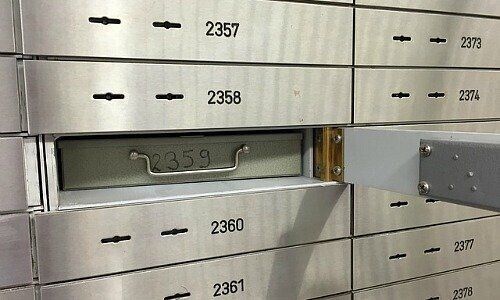The Swiss bank UBS hit $3 trillion in assets in its flagship private bank last year – a new record. The only problem is that its clients only want it to manage roughly half that.
When new UBS CEO Ralph Hamers faced media and investors for the first time since taking over 12 weeks ago, the world's largest wealth manager hit a record $3.016 trillion in assets at its private banking arm, buoyed by $21.1 billion in fresh inflows last year.
The Swiss bank also made a stunning first-time disclosure for the flagship unit, co-run by Iqbal Khan and Tom Naratil: roughly half of the unit's funds, or $1.5 trillion, don't generate any recurring revenue. The bank has been trying for years to hike its share of clients locked into mandates.
Mathematical Margin Erosion
This method is vastly preferable to wealth managers because it feeds revenue predictably, quarter for quarter, and underpins margins. UBS saw $13 billion head for mandates in the fourth quarter, fuelling a five percent rise in recurring income.
The fillip doesn't change UBS' fundamental problem: the Swiss bank risks becoming the world's largest custodian of assets, as opposed to a manager. «The recurring revenue that we are receiving and where we do see an increase is being allocated over a larger invested asset base,» finance chief Kirt Gardner told analysts on Tuesday.
«Mathematically that just results in some erosion in the margin,» Gardner said. Contractless assets normally generate transactional revenue as well as net interest income, which has crumbled under the ultra-expansionary monetary policy. A spokesman for UBS noted that the assets aren't necessarily unprofitable: fees on structured products – one of UBS' most lucrative categories – are booked as non-recurring.
Asians Doing It For Themselves
Asia-Pacific, the wealth manager's biggest growth region, illustrates the effect especially dramatically: assets climbed by one-quarter to $560 billion, but the bank is still struggling with exceedingly low penetration of mandates (shy of 13 percent). Asia's wealthy appear to appreciate UBS' stability, but are trading and investing elsewhere.
The equation works better in UBS' other major regions: it has more than one-third of clients in mandates in Switzerland, 38 percent in wider Europe, the Middle East, and Africa, and nearly 40 percent in the U.S. – its largest market. Six years ago, UBS targeted 40 percent across all the regions.
Asset Servicer And Custodian
UBS certainly won't rest on its (volume) laurels. As Gardner, the CFO, said on Tuesday, «We manage the business for profit before tax.» Meanwhile, Hamers' agenda as CEO is a modernization of the hidebound lender, vague themes of which he outlined on Tuesday.
Hamers wants to instill an efficient, «high performance» culture at UBS. «Inefficient» money that doesn't work for the bank range from affluent clients who don't want to dip into stock-buying to billionaires who mainly use UBS as an asset servicer of the custodian, but delegate decision-making and financial planning to their own experts or family offices.
UBS' Counter-Initiatives
UBS' adviser force of 9,575 is countering with closer links to its investment bank, in an attempt to find private market opportunities for the super-rich. In Europe, UBS is looking to become more efficient with its less-wealthy clients by standardizing and automating for those who have millions and not billions. It is also hustling clients a bit more if they leave large Swiss franc-based cash deposits by charging them for the privilege.
It is also trying out a digital bank in China for affluent clients, with a view to rolling it out more widely. The bank isn't short of initiatives to prevent itself from becoming the world's largest custodian. Hamers, who pledged his undivided attention to UBS despite a Dutch probe into money laundering during his time at ING, a $1.5 trillion problem awaits.
Katharina Bart contributed reporting



































